#steven gillon
Explore tagged Tumblr posts
Video
youtube
3 notes
·
View notes
Text













Happy Heavenly Birthday to the Prince of Camelot, John Fitzgerald Kennedy Junior! He would have been 64 today. 🖤
“He was the heir apparent to Camelot, he was the one who was going to return America to the glory days of the early 1960s. That was a burden that would have crushed most people, but not him.” — Steven Gillon, John’s friend and college roommate.
#the kennedys#the kennedy family#kennedy family#kennedys#jfk jr#john f. kennedy jr.#john f kennedy jr#jfk jr.#jfk#john fitzgerald kennedy#john f kennedy#john f. kennedy#jack kennedy#jackie kennedy#jacqueline kennedy#jacqueline lee bouvier kennedy onassis#jackie o#caroline kennedy#caroline bouvier kennedy schlossberg#caroline bouvier kennedy#1960s
60 notes
·
View notes
Text
I've been thinking about getting a book on John but I've heard that The Good Son by Christopher Anderson isn't great, does anyone have a review of America's Reluctant Prince by Steven Gillon?
2 notes
·
View notes
Text
I'm trying to finish up a couple of the books in my TBR before I head out for vacation, so I finally finished up as much of Fierce Valor as I was going to read. I guess I really don't like Frederick and Dorr's writing style - it feels...like it comes from the same school of history writing as Ambrose, with more of an eye to telling a story, and filling in with speculation, than sharing facts. Anyway, I'm glad I checked this one out from the library - it doesn't need to be part of my collection.
A friend asked me if I'd consider writing a drabble or two about what various Girl Gang members were doing on December 7th, so to help fill in I've started Steven M. Gillon's Pearl Harbor: FDR Leads the Nation to War, which runs readers through the first 24 hours of response from Washington. It's really interesting so far!
5 notes
·
View notes
Text
updated Review of a Library Book Worth Buying: Separate and Unequal, by S. Gillon
Project Do Better strongly urges the supporting of our library systems, which is where I discovered this book, but some books are also worth buying as references. Separate and Unequal: The Kerner Commission and the Unraveling of American Liberalism, by Steven M. Gillon, is one of them. How sad that the contents and conclusions of this report are still relevant, and still ignored,…

View On WordPress
0 notes
Video
youtube
It’s time to stop. It’s time to look out for each other in the distance. Time to stare humanity in the eyes, to take a break for the world. It’s time to stop. Time to take a pause, so we can play again. To think of everyone and meet no one. To reset, re-centre, switch off, to move on. Time to change our little world, to calibrate the path of mankind (...)
It's time to stop. Time to reset, time to recenter, time to switch off so we can move on. The best part of it all? We are in this together (...)
It’s time to stop. We are meant to connect and we are stronger together, but separated, we are today more united than ever. And for now, our main strength is to be apart (..)
Nature, landscapes, beaches and monuments aren’t going anywhere. They will still be there waiting for a better time to be lived. And we must do the same for a while. It’s time to stop. The perfect time not to visit anything. Sometimes to rise is to stand still. It’s time to stop, stop and think of ourselves, think of everyone else too. It’s time to stop and refocus as a whole, for all. It’s time to understand and respect our times. Respect one another. The faster we stop the sooner we will bond again. It’s time to dream of those amazing days to come (...)
#film#Visit Portugal#time to stop#coronavirus#stayhome#Can't Skip Hope#Partners#Ivo Purvis#Pedro Jarnac Freitas#Steven Gillon#James Palmer
1 note
·
View note
Photo










New from Dutton and biographer Steven M. Gillon, America’s Reluctant Prince: The Life of John F. Kennedy Jr.
#books#steven m. gillon#robert f. kennedy jr.#the kennedys#biography#american history#new books#new releases
2 notes
·
View notes
Text
steven gillon / desolatus out today with thanks to @steven_gillon @adrianoesteves
7 notes
·
View notes
Photo

John F. Kennedy Jr and Daryl Hannah. According to Steven M. Gillon’s recent biography America’s Reluctant Prince: The Life of John F. Kennedy Jr., Kennedy and Hannah first met in the early ‘80s while on respective family vacations in Saint Martin. “John found it odd that Daryl seemed to carry a teddy bear with her wherever she went, but also found her fascinating,” Gillon writes of their initial meeting. They were introduced by Hannah’s billionaire stepfather Jerrold Wexler, who’d made large contributions to the presidential campaign of Ted Kennedy, John's uncle. However, it wasn’t until they met again at the wedding of John's aunt, Lee Radziwill, to director Herb Ross in 1988, that they began dating. Gillon, a friend to John as well as a historian said in an interview: “John just found Daryl so self-absorbed.” In America’s Reluctant Prince he writes that while Jackie was in the hospital in New York, just days ahead of her death in 1994, John was in L.A. for the funeral of Hannah’s dog — yep. Fueling the absurdity of the story, Hannah then got angry with John because he hadn’t chosen a more elaborate box for the dog’s ashes. “That just infuriated him,” Gillon told us. “And even after [Jackie] died, Daryl had another dog that was sick and John was up in Martha's Vineyard or Hyannis Port, and Daryl's on the phone talking about her dog all the time and John is there in the kitchen with [his longtime friend] Sasha Chermayeff, and he says, ‘Can you believe this. I just lost my mom and all she wants to talk about is her sick dog.’” Though “in his mind, the relationship had already ended,” Kennedy knew he couldn’t let a public breakup distract from Jackie’s passing, hence the aforementioned roller blading outing. By August of 1994, about three months after Jackie’s death, Kennedy and Hannah had split for good. Via InStyle. #jfkjr #darylhannah #90s https://www.instagram.com/p/CP_c-EWndXw/?utm_medium=tumblr
31 notes
·
View notes
Video
youtube
4 notes
·
View notes
Photo
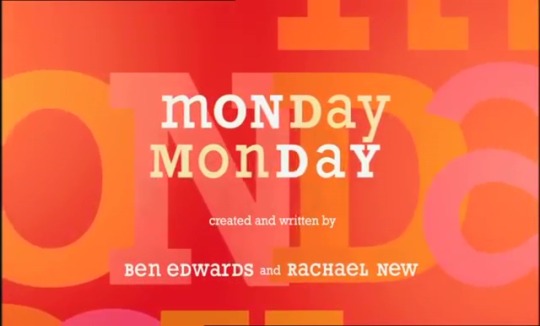
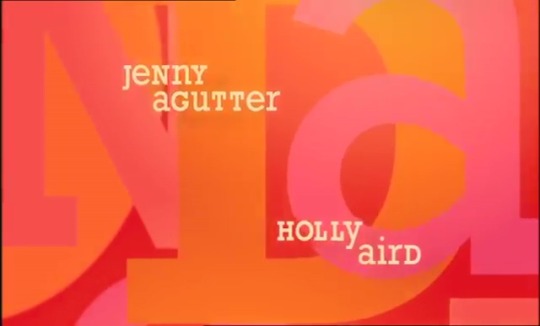

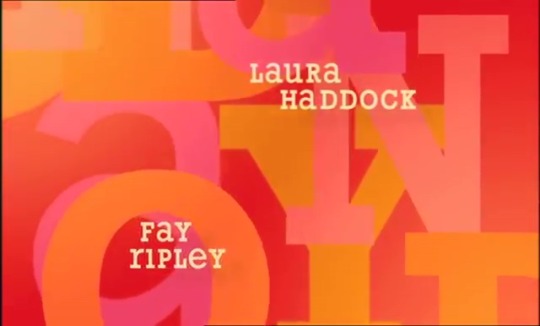
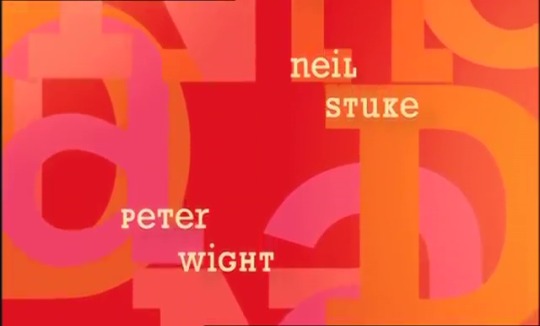
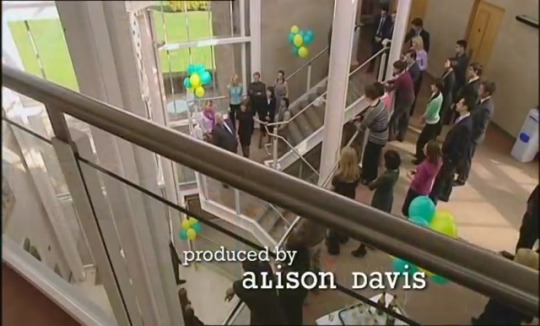
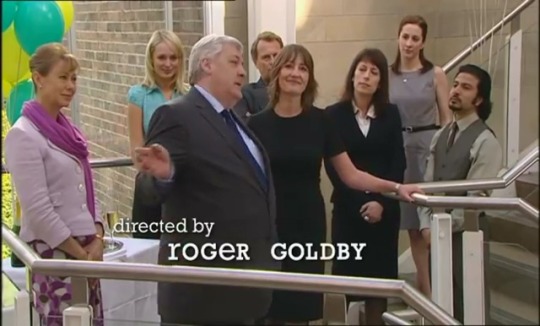
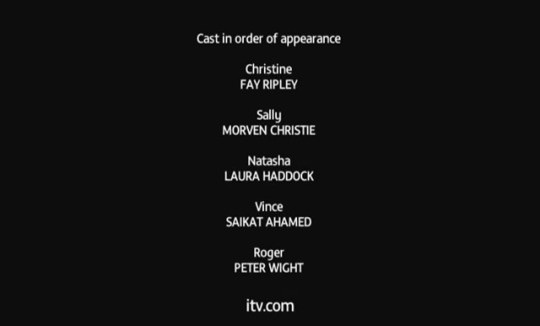

Monday Monday - ITV UTV - July 13, 2009 - August 24, 2009
Comedy / Drama (7 episodes)
Running Time: 60 minutes
Stars:
Management
Clive Merrison as Gavin
Peter Wight as Roger Sorsby
Jenny Agutter as Jenny Mountfield
Holly Aird as Alyson Cartmell
Tom Ellis as Steven McColl
Human Resources
Fay Ripley as Christine France
Morven Christie as Sally Newman
Miranda Hart as Tall Karen
Jodie Taibi as Small Karen
Marketing
Neil Stuke as Max Chambers
Laura Haddock as Natasha Wright
Saikat Ahamed as Vince
Finance
Nick Sampson as Keith Saunders
Building Services & Facilities Management
Joan Oliver as Susan
Susan Earl as Janet
Shop Floor
Sue Vincent as Helen
Bruce McGregor as Greg
Richard Fleeshman as Gillon
#Monday Monday#mtv#ITV#UTV#2000's#Comedy#Drama#Jenny Agutter#Holly Aird#Morven Christie#Tom Ellis#Laura Haddock#Fay Ripley#Neil Stuke#Peter Wight
1 note
·
View note
Text
tagged by: @pumpkinspiceandpaperbacks
tagging: @wintersoldiersbutt @bookcub @lizziethereader @surfacage @wickedcoughsyrup
Relationship Status: single
favourite colors: purple but i wear a lot of blue
three favourite foods: mashed potatoes, my great grandma’s apple salad (I’m the one that makes it now. she passed away a few years ago), and green apple
song stuck in my head: One Jump Ahead from Aladdin
last song i listened to: M.A.A.D City (Feat. MC Eiht)Kendrick Lamar
last movie i watched: Halloweentown (it was streaming on youtube for halloween)
time: 8:58 AM
top three shows: Chilling Adventures of Sabrina, Doctor Who
books i’m currently reading: Separate and Unequal: The Kerner Commission and the Unraveling of American Liberalism by Steven M. Gillon and Voices of Resistance: Muslim Women on War, Faith, and Sexuality
last thing i googled: how tall is steve rogers
how many blankets do you sleep with: 1. It’s a quilt I made a few years ago
dream trip: Traveling the middle east
anything you really want: to get rid of my undergrad debt and not have law school debt
2 notes
·
View notes
Text
Midnight Sting [Diggstown] (1992, James Woods, Louis Gossett Jr, Bruce Dern) - Classic Movie Review 10,036
Midnight Sting [Diggstown] (1992, James Woods, Louis Gossett Jr, Bruce Dern) – Classic Movie Review 10,036
Director Michael Ritchie’s 1992 Midnight Sting [Diggstown] stars James Woods as Gabriel Caine, a conman fresh out of jail who gets middle-aged prize-fighter ‘Honey’ Roy Palmer (Louis Gossett Jr) to help him win a bet with mean, scheming boxing-hall owner John Gillon (Bruce Dern), boss of a boxing-mad town called Diggstown.
Steven McKay’s clumsy script is an attempt to mix Rocky with The Sting,…
View On WordPress
0 notes
Photo

America's Reluctant Prince: The Life of John F. Kennedy Jr. by Steven M Gillon $18.42
http://rover.ebay.com/rover/1/711-53200-19255-0/1?ff3=2&toolid=10039&campid=5337702801&item=283541481756&vectorid=229466 America’s Reluctant Prince: The Life of John F. Kennedy …
0 notes